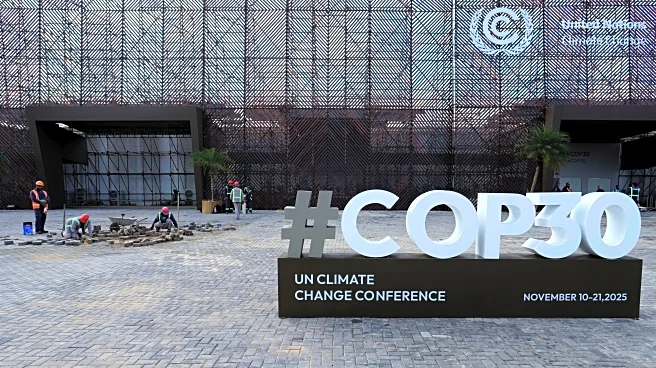What's Happening?
A new report highlights the increasing intensity of wildfires worldwide due to human-driven climate change. The State of Wildfires 2024-25 report reveals that global warming has dramatically increased
the scale and severity of wildfires, making severe fire seasons 25 to 35 times more likely. The report combines satellite data, weather reanalysis, and land-surface models to demonstrate how heat, drought, and vegetation changes have led to record-breaking fires from the Amazon to California. Wildfires in 2024 and 2025 resulted in over 200 deaths globally, including significant impacts in Southern California and Canada's Jasper National Park. The fires have also caused substantial economic damages and air quality issues, with fine particulate pollution reaching dangerous levels.
Why It's Important?
The intensification of wildfires due to climate change has profound implications for public health, economies, and environmental sustainability. The increase in carbon emissions from wildfires contributes to a positive feedback loop, exacerbating global warming conditions. Regions affected by wildfires face significant economic losses, with damages in Southern California alone estimated at $140 billion. The air quality impacts pose health risks to millions, highlighting the need for effective fire management and climate mitigation strategies. Stakeholders in government, environmental policy, and public health must address these challenges to protect communities and ecosystems.
What's Next?
Future efforts to manage wildfires may involve enhanced satellite monitoring, improved fire-weather models, and increased investment in climate finance. Policymakers and environmental groups are likely to focus on integrating sustainable practices and nature-based climate solutions to mitigate wildfire risks. Continued research and technological advancements in Earth observation could provide valuable insights for fire management and prevention.
Beyond the Headlines
The ethical and cultural dimensions of wildfire management are significant, as communities grapple with the impacts of climate change and the need for sustainable land use practices. Long-term shifts in policy and public awareness may be necessary to address the root causes of increased wildfire intensity. The role of technology in monitoring and managing wildfires could also evolve, providing new opportunities for collaboration and innovation.













